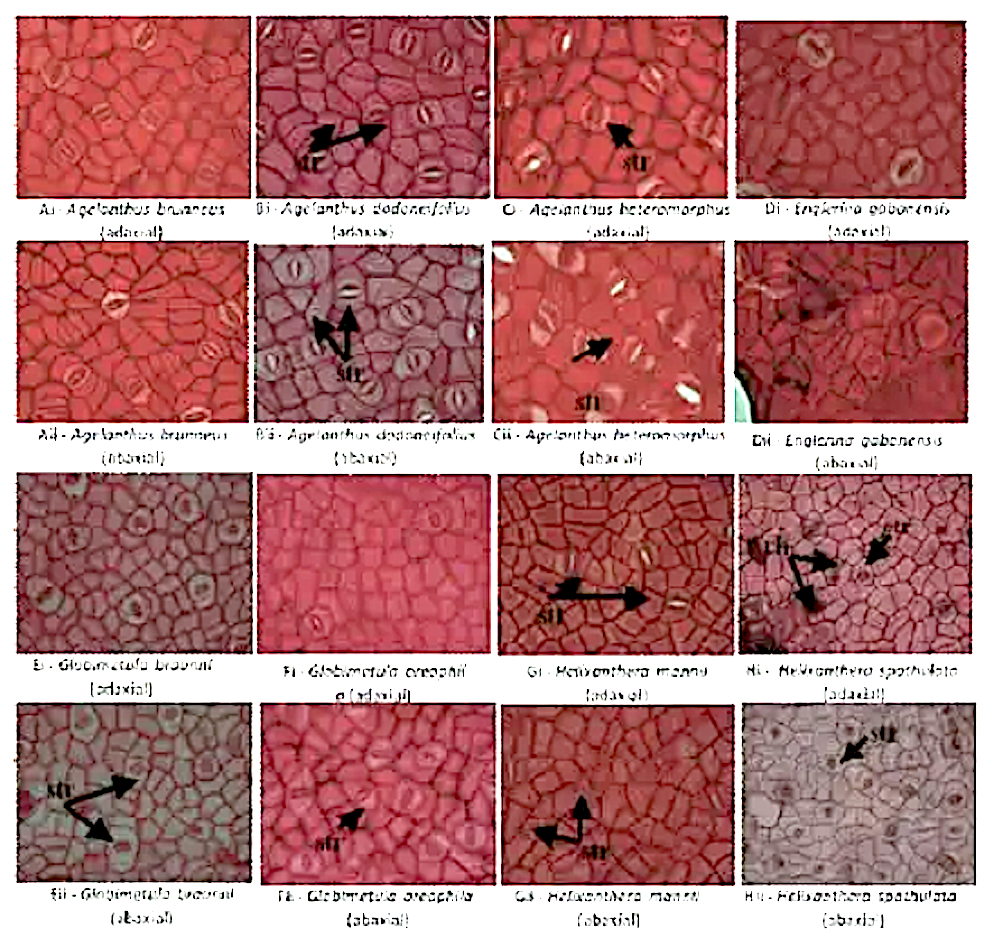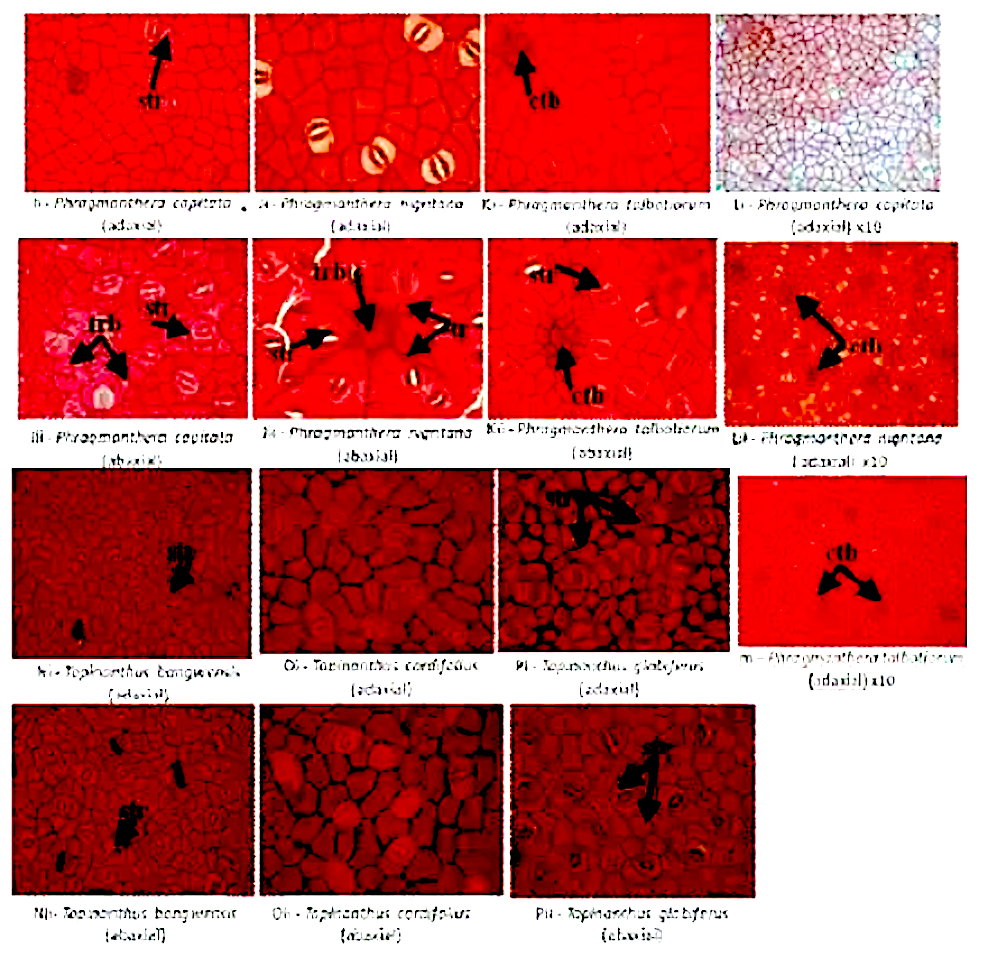
Taxonomic Significance of Leaf Epidermal Characters of the Family Loranthaceae in Nigeria
by Ibrahim J. A., Ayodele A. E. (2013)

===
In World Applied Sciences Journal 24(9): 1172-1179 – DOI: 10.5829/idosi.wasj.2013.24.09.13125 –

1175Fig. 1:Photomicrographs of epidermal layers of leaves of the genera Agelanthus, Englerina, Globimetula andHelixanthera in Nigeria.Key: str = striations; rh = rhaphidesFig. 2:Photomicrographs of epidermal layers of leaves of the genera Phragmanthera and Tapinanthus in Nigeria.Key: str = striations; tr = trichome; trb = trichome base; ctb = epidermal cells surrounding trichome base
Abstract
Members of the parasitic family Loranthaceae are known for their destructive nature to host plants as well as for their medicinal value. Taxonomic revision and distribution study of the family in Nigeria was recently carried out.
The taxonomic importance of leaf epidermal characters in the family Loranthaceae has been investigated with light microscopy in the present study. Amphistomatic leaf type, polygonal cell shape, straight to curved anticlinal wall and pericytic stomata types were features common to all the species.
Trichome and trichome bases were restricted to the genus Phragmanthera, striations were absent in Agelanthus brunneus (Engl.) Balle & Halle , Englerina gabonensis (Engl.) Balle and Tapinanthus cordifolius Polh. & Wiens.
Largest cells of 67.0µm occurred in Agelanthus dodoneifolius (DC) Polh. & Wiens while the smallest cells of 27.5µm occurred inTapinanthus bangwensis (Engl. & K. Krause) Danser.
This is the first detailed account of epidermal and stomatal characters of the Loranthaceae in Nigeria.